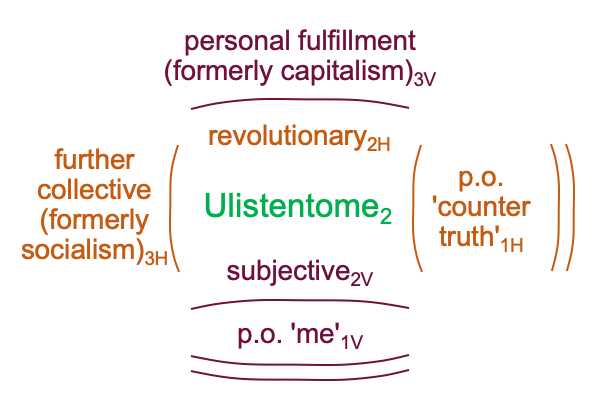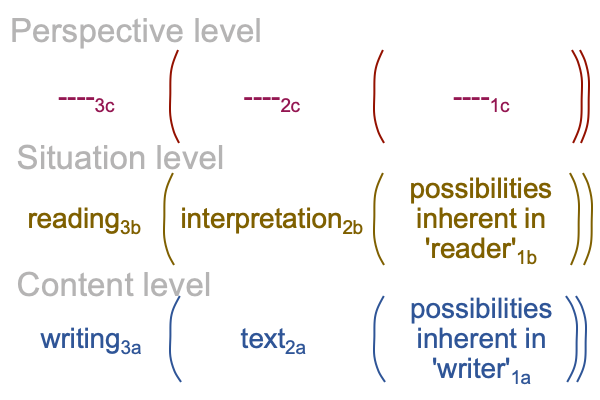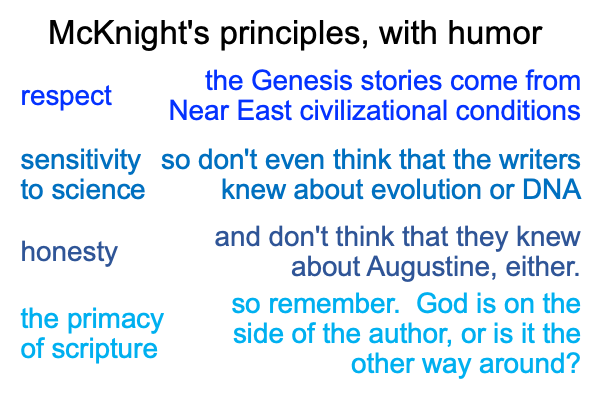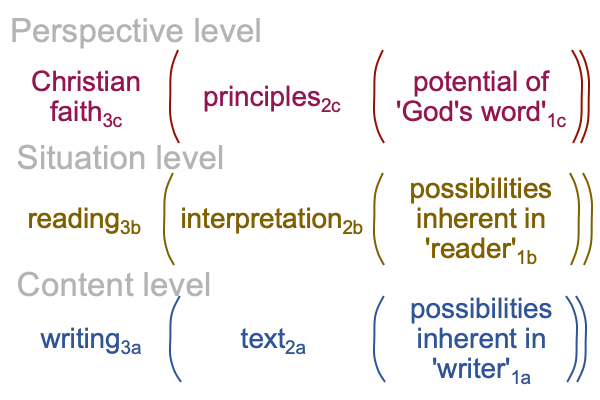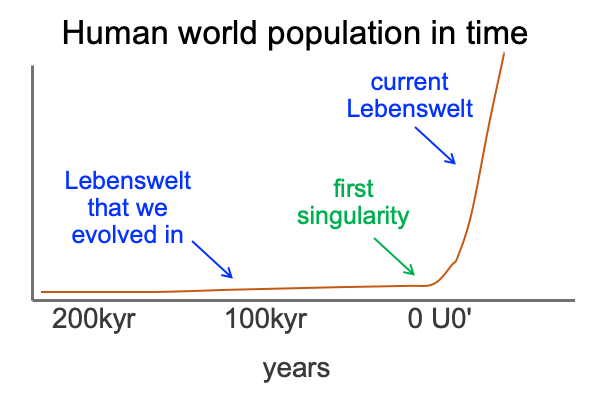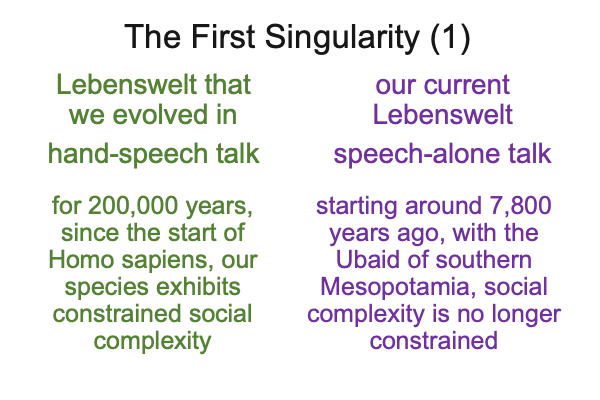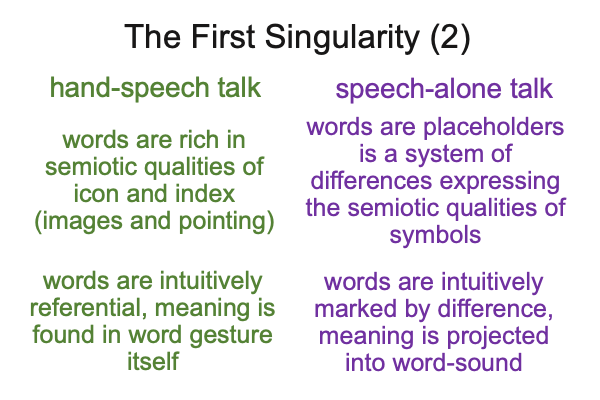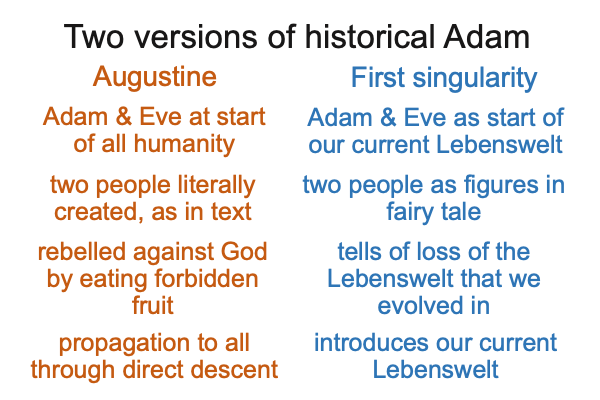Looking at Dennis Venema and Scot McKnight’s Book (2017) “Adam and the Genome” (Part 11 of 22)
0106 What about disposition1H and niche1H?
Good grief. This comparison sounds almost deterministic.
Here is a picture.
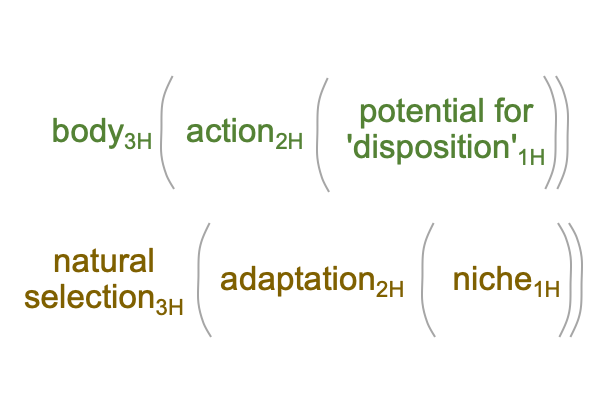
Of course, the disposition of a species1H should parallel the potential of something independent of the adapting species1H.
Does that include the human religious disposition1H?
Okay, then what is The Human Niche?
Oh my, Razie Mah wrote a masterwork with exactly that title.
0107 These parallels (and there are many more) illustrate the following claim: Those who abandon Christianity because Adam and Eve cannot be the biological ancestors of all humans do not simply lose their religion. They gain an alternate religion.
In terms of message, an alternate religion manifests an alternate intersection.
In the United States, from 1967 to 2017 AD, that religion is Big Government (il)Liberalism.
Some would say, “Bigilib.”
0108 Dominic Burbidge, an administrator for the Programme for the Foundation of Law and Constitutional Government at the University of Oxford, wrote a serious piece on contemporary universities for the Witherspoon Institute. His article is titled: Listening: An Antidote to the Modern University’s Incoherence.
I find the article hilarious.
0109 Here is his argument in a nutshell: The modern university consists in three disparate academic traditions: the University of Rationalism, the University of Subjectivism and the University of Revolution. He proposes a fourth university in order to balance these three traditions. He calls this fourth (proposed) institution: the University of Listening.
0110 Here is my interpretation: The modern university is a single actuality that we call the University of Rationalism.
Within this university, two contradicting and complementary styles flourish.
The so-called University of Subjectivism engages in inquiry2 that emerges from (and situates) the potential of the individual person, “me”1.
The so-called University of Revolution channels inquiry2 into the potential of a counter-truth (to a prevailing truth, already established by the (old-school) University of Rationalism, or even better, founded on Christian doctrine)1.
In short, the new University of Rationalism redefines the term, “rational”.
Are you listening to me?
0111 Burbidge did not mention the normal contexts for these growing academic traditions. I will label these normal contexts, “S” and “R”.
0112 Here are the two nested forms.
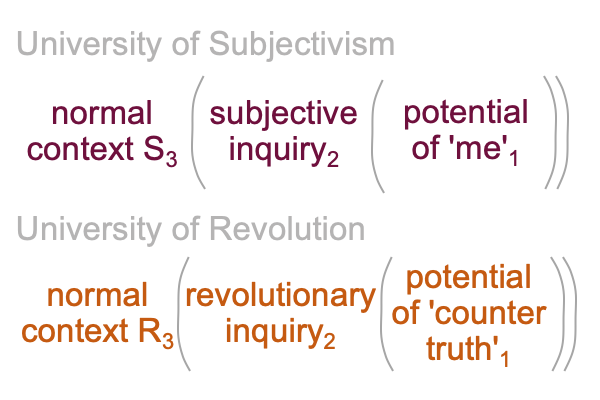
0113 The normal contexts may now be named.
Normal context S3 is personal fulfillment3.
Normal context R3 is furtherance of the collective3.
0114 The inquiry of subjectivism and the inquiry of revolution coalesce into the single actuality of the (new school of the) University of Rationalism.
0115 Here is the resulting intersection.
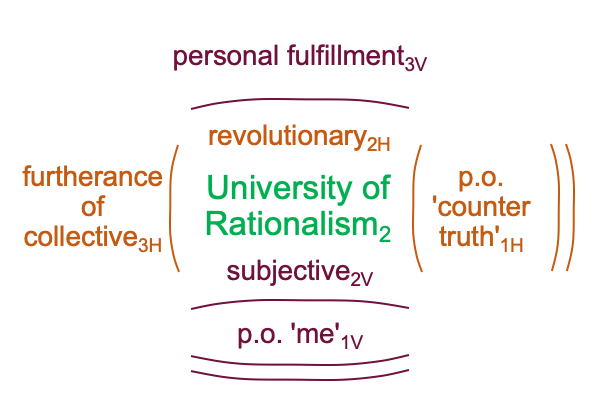
0116 Oh, do I need to say that this is all found How To Define The Word “Religion”, by Razie Mah, available at smashwords and other e-book venues?
To teach the course, take a look at Razie Mah’s blog for December 2023.
Okay, what else does this imply?
This intersection describes the message underlying the religion of BG(il)L.
That is not enough, what else?
Our phenotype2V entails the innate expectation of “religion” characterized by meaning, presence and message. Meaning goes with social construction (as opposed to sensible construction). Presence associates to three nested tiers: societyC, organizationB and individual in communityA. Message includes the intersection.
Now, admittedly, there is a twist. Our current Lebenswelt is not the same as the Lebenswelt that we evolved in. More on that later.

